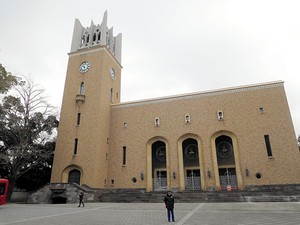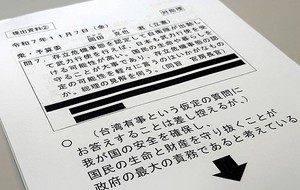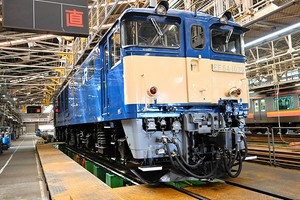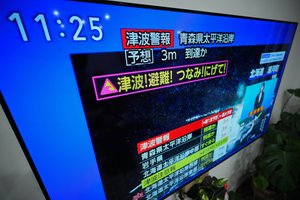By KEN MIYAZAKI/ Staff Writer
May 10, 2024 at 18:13 JST
A major "kaiten" sushi restaurant chain is fishing for foreign tourists in Tokyo's upscale Ginza district, hoping to hook customers with low-priced offerings off a conveyor belt of choices.
The Kura Sushi Global Flagship Store Ginza opened in late April, marking the first major conveyor belt chain restaurant in the district.
According to its operating company, Kura Sushi Inc., the purpose is to attract foreign visitors.
“At the Ginza restaurant, half of the customers are foreigners," a company representative said. "We hope that they will not only look at the pictures on the touch screen panel and make their selections, but also enjoy picking up sushi when they see the items going by and think, ‘This looks delicious.’”
The restaurant seats 242 people and has a 123-meter revolving lane, the longest for the company.
The interior of the restaurant is reminiscent of the Edo Period (1603-1867) and features stalls where chefs make sushi, tempura and dango dishes.
Prices at Kura Sushi vary depending on the locations of the restaurant. At the cheapest outlets, prices start at 115 yen ($0.74) per plate, including tax.
At the Ginza restaurant, which is the most expensive establishment, prices start at 150 yen per plate. The menu includes expensive, limited items, such as “tokujo nigiri kura kura,” which is 1,800 yen including tax.
The most common type of conveyor-belt sushi chain restaurants today is a “lane type,” which uses a lane to deliver ordered sushi and other items directly to customers’ seats.
Kura Sushi is the only chain in Japan and abroad that still uses a rotating conveyor belt on which various sushi dishes are placed on for customers to view and pick up while also having a lane to deliver orders to customers.
A QR code is attached on each revolving plate cover and cameras equipped with artificial intelligence are installed in the seats.
The company uses such technology to predict what customers are likely to order and then place the items on the lane where they are expected to order.
By doing that, the company said it can keep the food fresh and reduce waste to about 2 percent.




















A peek through the music industry’s curtain at the producers who harnessed social media to help their idols go global.
A series based on diplomatic documents declassified by Japan’s Foreign Ministry
Here is a collection of first-hand accounts by “hibakusha” atomic bomb survivors.
Cooking experts, chefs and others involved in the field of food introduce their special recipes intertwined with their paths in life.
A series about Japanese-Americans and their memories of World War II